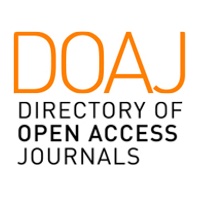O sagrado e a violência no ecossistema da comunicação digital
Resumo
As categorias do sagrado e da violência estão no centro do pensamento de René Girard. Tanto a sua teoria do “bode expiatório” como a sua visão da relação indissolúvel entre o sagrado e a violência servem como chaves conceituais para estudar a comunicação em plataformas digitais, especialmente na perspectiva de uma difusão exuberante do visualmente grotesco e do enjoativamente sentimental. na estética das redes digitais. Neste artigo propomos o desenvolvimento de um esquema teórico que permita uma leitura neomítica e neo-religiosa da comunicação no ecossistema digital, , bem como refletir sobre sua aplicabilidade em diferentes campos de estudo, desde representações grotescas do corpo humano até a análise de nossas emoções em relação à natureza e aos animais não humanos.
Downloads
Referências
Alexander, J. C. (2006). From the depths of despair: performance, counterperformance and ‘September 11’. En Alexander, J. C., Giesen, B. y Mast, J. L. (Eds.), Social Performance. Symbolic Action, Cultural Pragmatics, and Ritual (pp. 91-114). Cambridge University Press.
Bouchard, G. y Taylor, C. (2008). Building the future: A time for reconciliation. Abridged Report. Gouvernement du Québec.
Bugallo, A. I. (2015). Filosofía ambiental y ecosofías. Arne Naess, Spinoza y James. Prometeo Libros.
Canetti, E. (1978 [1960]). Crowds and Power. Continuum.
Citton, Y. (2008). Entre l’économie psychique de Spinoza et l’inter-psychologie économique de Tarde. En Citton, Y. y Lordon, F. (Dirs.), Spinoza et les sciences sociales. De la puissance de la multitude à l’économie des affects (pp. 71-106). Éditions Amsterdam.
Citton, Y. (2017). The ecology of attention. Polity.
Crockett, M. J. (2017). Moral outrage in the digital age. Nature Human Behaviour, 1, 769-771 https://doi.org/10.1038/s41562-017-0213-3.
Deluca, K. M. (2009). Greenpeace International Media Analyst Reflects on Communicating Climate Change. Environmental Communication: A Journal of Nature and Culture, 3(2), 263-269. https://doi.org/10.1080/17524030902972734.
Durham, M. (1996). Preparing for armageddon: Citizen militias, the patriot movement and the Oklahoma city bombing. Terrorism and Political Violence, 8(1), 65-79. https://doi.org/10.1080/09546559608427333.
Eliade, M. (2013 [1957]). Le sacré et le profane. Gallimard.
Fisher, M. (2016). The Weird and The Eerie. Repeater Books.
Forrester, M. (2013). PETA making social noise: A perspective on shock advertising. Portuguese Journal of Social Science, 12(1), 85-100.
Freud, S. (1955 [1930]). El malestar en la cultura. Santiago Rueda.
Gilbert, A., Prévost, M. y Telier, G. (Coord). (2022). Libertés malmenées. Chronique d’une année trouble à l’Université d’Ottawa. Leméac.
Girard, R. (1983). Le Bouc émissaire. Grasset.
Girard, R. (2010 [1972]). La violence et le sacré. Fayard/Pluriel.
Girard, R. (2011). Sacrifice. Michigan State University Press.
Girard, R., Oughourlian, J. M. y Lefort, G. (1978). Des choses cachées depuis la fondation du monde. Grasset.
Goldhaber, M. H. (1997). The Attention Economy and the Net. First Monday, 2(4). https://firstmonday.org/ojs/index.php/fm/article/download/519/440.
Hajer, M. A. (1997). The Politics of Environmental Discourse: Ecological Modernization and the Policy Process. Oxford University Press.
Jensen, D. (2016). The Myth of Human Supremacy. Seven Stories Press.
Kaufmann, E. (2020). Liberal Fundamentalism: A Sociology of Wokeness. American Affairs, IV(4). https://americanaffairsjournal.org/2020/11/liberal-fundamentalism-a-sociology-of-wokeness/.
Labasse, B. (2020). La valeur des informations. Ressorts et contraintes du marché des idées. Les Presses de l'Université d'Ottawa
Lasch, C. (1991 [1979]). The Culture of Narcissism. American Life in an Age of Diminishing Expectations. Norton.
Lévy, P. (1995). Qu’est-ce que le virtuel? Éditions La Découverte.
May, S. (2019). The Power of Cute. Princeton University Press.
McLuhan, M. (1962). The Gutenberg galaxy; the making of typographic man. University of Toronto Press.
Moench, D. B. (19 de octubre de 2020). The WASP Roots of the Social Justice Movement. Tablet. https://www.tabletmag.com/sections/news/articles/wasp-roots-social-justice.
Moles, A. (1977 [1971]). Psychologie du kitsch. L’art du bonheur. Denoël/Gonthier.
Ortega y Gasset, J. (2012 [1929]). La rebelión de las masas. Espasa Libros.
Rieff, P. (1966). The Triumph of the Therapeutic. Uses of Faith After Freud. Harper & Row.
Rose, P. (2010). René Girard as Media Ecologist. En Corey, A. (Ed.), Valuation and Media Ecology: Ethics, Morals, and Laws (pp. 91-123). Hampton Press.
Sacasas, L. M. (27 de septiembre de 2011). Nathaniel Hawthorne Anticipates McLuhan and de Chardin. Technology, Culture, and Ethics. https://thefrailestthing.com/2011/09/27/nathaniel-hawthorne-anticipates-mcluhan-and-de-chardin/.
Tchakhotine, S. (1992). Le viol des foules par la propaganda politique. Gallimard.
Theilard de Chardin, P. (1983 [1963]). El fenómeno humano. Taurus.
Veroni, C. (2014). Spin. How Politics Has the Power to Turn Marketing On Its Head. Anansi.
Vizcaíno-Verdú, A. y Contreras-Pulido, P. (2024). Cross-platform hatedom: influencers’ strategies for managing affective aversión. Cuadernos Info, 60. https://doi.org/10.7764/cdi.60.85872.
Copyright (c) 2025 Isaac Nahón Serfaty

This work is licensed under a Creative Commons Attribution-NonCommercial-ShareAlike 4.0 International License.
Os autores detêm os direitos autorais e garantem à revista o direito de ser a primeira publicação do trabalho. Caso uma tradução do artigo já publicado na Austral Comunicación possa ser publicada em outra revista, solicita-se registrar a publicação original na versão traduzida.
A licença utilizada é CC BY-NC-SA, que permite compartilhar (copiar e redistribuir o material em qualquer meio e formato) e adaptar (remixar, transformar e construir sobre o material) nos seguintes termos: atribuição (reconhecer a autoria) e não comercial (o material não pode ser usado para fins comerciais). Atualização: 1 de fevereiro de 2022.
A Austral Comunicación permite ao (s) autor (es) reter os direitos de publicação sem restrições.











































